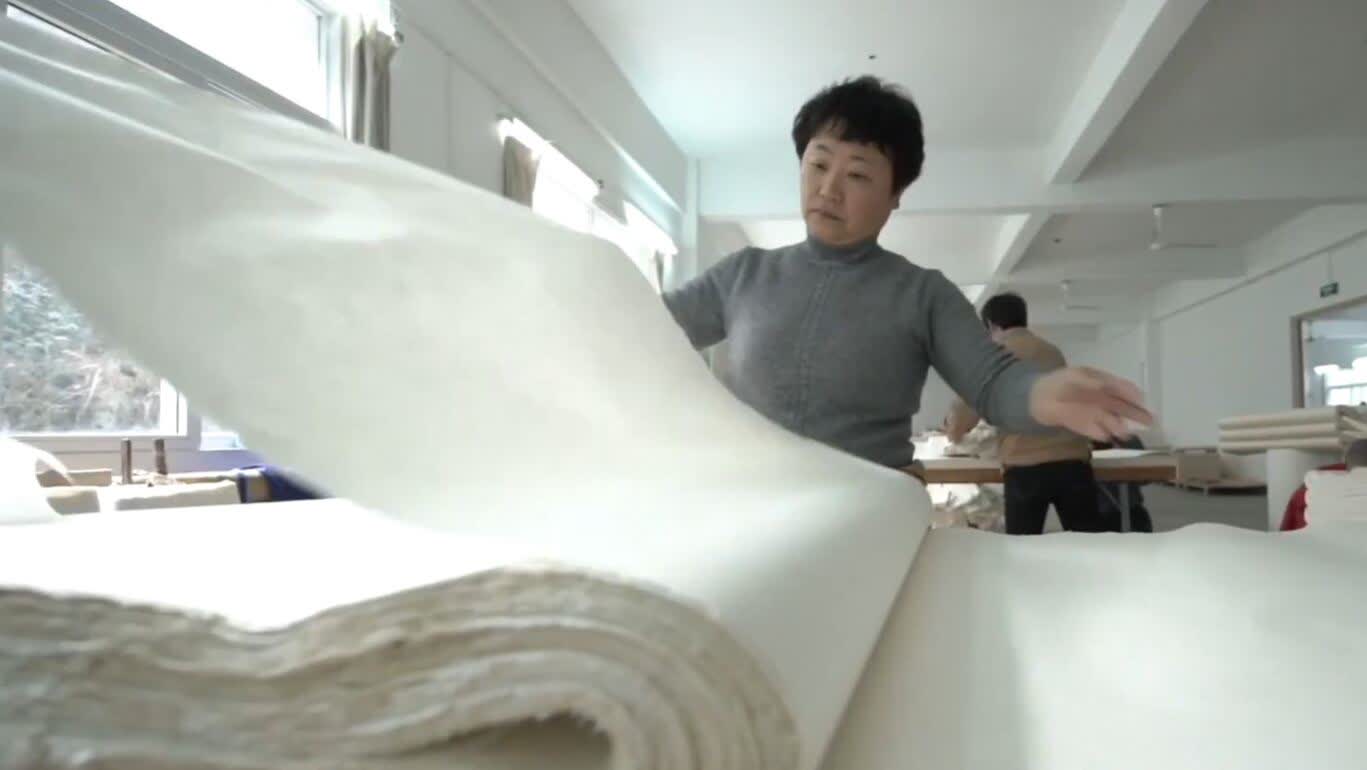人類文明的發展進程中出現了很多令人驚嘆的重大發明 - 中國造紙的技藝最早出現在公元100年。到了唐代,民間開始生產又輕又耐用的宣紙,成為中國古代紙張工藝的代表。宣紙具有文化價值、藝術價值,更加承載了知識和珍貴的歷史片段,成為了中國獨特的文化寶藏,亦登上聯合國教科文組織的世界非物質文化遺產名錄。宣紙以耐用見稱,有「紙壽千年」的美譽,製作的過程又複雜又嚴格。歷史久遠的手藝世代相傳,一共108個工序由選料開始,經過製漿、撈紙、晒紙及剪紙,生產一幅上乘的宣紙最長可以用上三年的時間,才可以達到潤墨好、抗老化和不易變形。位於安徽省的涇縣以出產宣紙聞名於世,歷代的工藝和製作經驗薪火相傳,透過老師傅與學徒一代一代的傳授,而且每個造紙的商號都對技術有豐富的文獻紀錄。到了今天,涇縣依然是造紙業最蓬勃的地方,而且技術不斷推陳出新,電子商貿和旅遊事業又為當地注入新的動力,連帶經濟發展和民生都一同受惠。作為一個旅客必到的景點,中國宣紙博物館同時肩負歷史研究的重任。現時涇縣有超過350 家生產各類型紙張的商號,為全球生產高達900噸宣紙以及超過5000噸可以用來書寫的優質紙張,是國內最大的手製紙張生產地。毫無疑問地宣紙已成為中國傳統的一個印記,是中華文化歷史瑰寶。造紙業的演化亦是社會前進歷程當中一個標記,當中的創意和匠心讓整個行業可以一直延續下去。一卷卷用心製作的宣紙,可以好好的記載中華文明的精髓,讓文學和智慧感染更多人,文化傳播得更加遠。
Paper That Takes Years to Make
China is known for inventing some of the most important tools in the history of mankind. One of these inventions is paper. The Chinese began making rice paper in the year 100. Originating in southeast China during the Tang Dynasty, it has a history of more than 1,200 years. The rice paper they made, even in its early forms, was durable and thus became incredibly useful.
With practical, artistic, and cultural values, paper has helped record the history and memories of Chinese culture and become a unique cultural phenomenon inscribed on the Representative List of the Intangible Cultural Heritage of Humanity of the UNESCO. The papermaking process is a feat of its own, drawing on a long lineage of craftspeople dating back centuries. It involves many stages and involves complex techniques with 108 steps in the process, from choice of materials, pulp-making, paper-making, drying, and cutting. It can take up to three years to make quality paper that is ink-absorbent, strong and durable.
Many craftsmen in the papermaking industry began to gather in Jingxian, a county in Anhui province, in the mid-1900s. While record-keeping preserves the centuries of knowledge of the craft, the best way to carry on papermaking is through the transfer of knowledge between master and apprentice. Modern day Jingxian is now the leader of papermaking in China, honing new innovations over the past 70 years. More recently, Jingxian has modernized its e-commerce and tourism initiatives to develop the rice paper industry and bolster the local economy. At the same time, China’s Rice Paper Museum has become a primary tourist attraction and an important national research institute.
Today, Jingxian has more than 350 papermaking businesses that produce different kinds of paper, including 900 tons of rice paper and more than 5,000 tons of writing and drawing paper. It has become the largest production base of handmade paper in China. Rice paper is an established aspect of traditional Chinese culture, widely regarded as a “national treasure.” And rice paper is a testament to the creativity and craftsmanship you can still find in China today, but more broadly, the ingenuity of centuries of well-maintained cultural sharing. Papermaking has led us to a world full of books and now digital screens and I wonder where in a world of advanced technology where this story will travel next.
I’m James Chau. Thank you for being with us.

